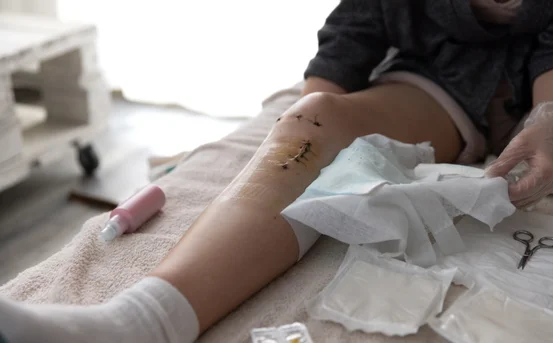Heart disease is one of the main causes of deaths across the globe and complicated aortic diseases frequently require intricate surgical procedures. One of the lifesaving surgeries can be one called the Bentall Procedure, which is frequently utilized to treat patients suffering from aneurysm, aortic root disease or valve dysfunction. In this article we’ll go over all the details you must learn about the treatment options to treat Bentall Procedure, such as why it’s needed and how it’s performed and what to anticipate during the recovery process.
What is the Bentall Procedure?
A Bentall Method is one kind of open heart surgery that requires replacing the aortic valve and aortic root and ascending the aorta. It is typically required in patients who suffer from:
- Aortic aneurysm
- Aortic dissection
- Aortic valve regurgitation
- Genetic disorders, such as Marfan syndrome
In the course of the procedure, the surgeon replaces the damaged area of the aorta as well as the valve for the aortic with the help of a composite graft, which includes either a biological or mechanical valve as well as an artificial tube.
Why is the Bentall Procedure Needed?
The procedure becomes crucial when:
- The aorta is dilated or damaged.
- There is a higher risk of rupture in the aorta or dissection.
- The valve in the aortic region is either failing or leaks.
- Other methods of treatment, such as medication, are not as efficient.
In the event of delay, it can result in serious conditions like Aortic rupture, stroke and heart disease.
Preoperative Treatment and Evaluation
Prior to undergoing the Bentall procedure, patients undergo an extensive assessment. This is crucial for ensuring the success the procedure.
Diagnostic Tests Include:
- Echocardiogram to evaluate the structure of the heart and valve function
- CT Scan, or MRI to determine the condition and size of the Aorta
- Angiography is a method to determine obstructions in coronary arteries.
- Blood tests – to rule out infection or problems with clotting
Patients are also assessed for any comorbidities such as hypertension or diabetes that can be treated prior to surgery.
Surgical Treatment for Bentall Procedure
The Bentall procedure is done under general anesthesia. It can be completed in between 4 and 6 hours based on the level of complexity.
Steps of the Surgery:
- Access and Incision The median sternotomy procedure is used to let the chest open and allow access to the heart.
- Heart-Lung Bypass A cardiopulmonary bypass machine replaces the role of the lungs and heart during the operation.
- Resection The damaged aorta as well as the the aortic valve are carefully removed.
- Graft Placement A composite graft that has valves is sutured into the desired location.
- Reimplantation Coronary arterial arteries can be reattached with the graft.
- Closure The chest is shut and the patient is transferred to the ICU for observation.
Postoperative Care and Recovery
After surgery after the procedure, patients are taken to the ICU (ICU) to be closely monitored. The time required to recover from surgery can differ based on the patient’s health and their age.
Immediate Postoperative Treatment Includes:
- Ventilator support to help breathe
- Management of pain
- Blood thinners to stop the formation of clots
- Antibiotics to stop infections
- Monitor for complications or arrhythmias
Hospital Stay:
- The typical stay of patients at the institution for seven up to ten days.
- Initial mobilization as well as respiratory therapy are recommended to speed healing.
Long-Term Treatment and Follow-Up
The treatment’s success for Bentall Procedure does not end with the surgery. The long-term follow-up of patients is vital.
Key Aspects of Long-Term Care:
- Lifelong blood thinners, especially in the event that a mechanical valve is utilized.
- Regular imaging procedures: to observe the graft’s function and heart function.
- Lifestyle changes include healthy eating habits regularly exercising, and not smoking.
- Regular cardiology check-ups Every 6-12 months, or as directed.
In patients suffering from genetic diseases, continuous monitoring is necessary to detect any new dissections or aneurysms in the other regions of the aorta.
Risks and Complications
As with any major surgery that involves a significant risk, the Bentall procedure comes with risks. This could include:
- Bleeding
- Infection
- Blood is clots
- Stroke
- Arrhythmias
- Issues relating to valves
But, when it is performed in well-equipped centers and with experienced surgeons, the rate of success is very high, and patients generally live a normal life following surgery.
Advancements in Bentall Procedure
As medical technology advances the minimally surgically Bentall procedures and valve-sparing techniques are being researched. These newer techniques aim to:
- Reduce the time to recover
- Eliminate any problems
- Improve patient outcomes
Certain hospitals also utilize biocompatible grafts to lower the chance of developing immune reactions.
Conclusion
The treatment offered for Bentall Procedure is an essential treatment that can bring the possibility of a longer life for patients suffering from complex Aortic Root Diseases. From diagnosis to recuperation, every step of care has to be taken care of with precision by an inter-disciplinary team.
If you or someone close to you has been diagnosed with an aortic aneurysm or heart condition related to it and you are concerned about the condition, see an expert in cardiac surgery immediately. The early detection and prompt surgical intervention using the Bentall procedure could save your life.























